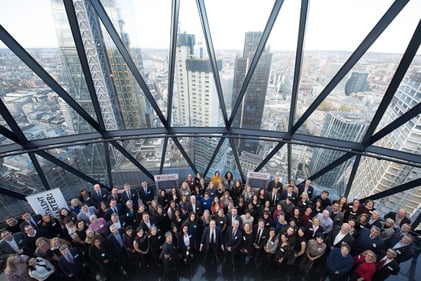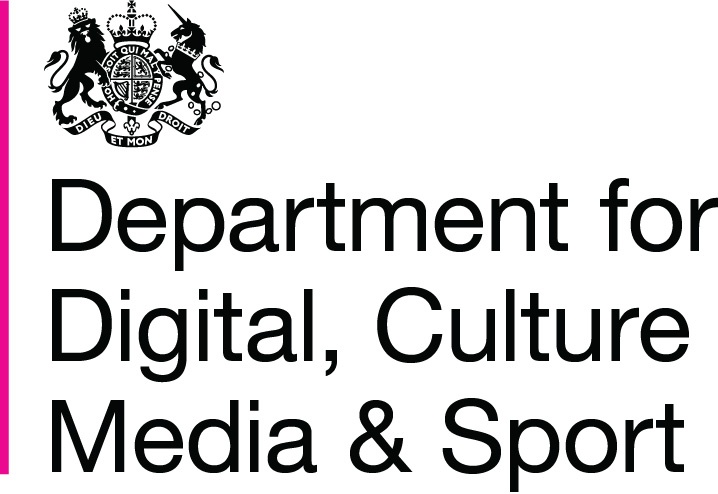On Aubrey Blanche’s first day as Atlassian’s Global Head of Diversity Inclusion, the company was hiring roughly 10% women into its technical workforce. Over the last year, 18% of their technical hires were women. That’s an impressive 80% delta. On top of that, its latest entry-level engineering cohort was 57% female. In a field that’s all about uncertainty and running experiments, Blanche’s have clearly worked.
Increasing diversity and inclusion (we’ll call it D&I here) may be the white hot topic in tech right now, but so much of the casual wisdom passed around remains theoretical and unproven. By contrast, Blanche has put enough to the test over enough time (at both Atlassian and Palantir before that) to back up her recommendations.
For startups looking to make diversity a priority, she contends that time is of the essence. Young, small companies have the rare chance to succeed early and sidestep the corrosive factor she calls ‘diversity debt’ — i.e. the escalating difficulty of creating a diverse workforce if your initial hires are homogeneous.
In this exclusive interview, she leans into empirical research to prescribe two seismic mindset shifts, and a set of principles proven to increase D&I. All of this advice can be implemented starting now, so that your company doesn’t miss out on the many benefits that come with a diverse environment where everyone — from underrepresented minorities to introverts to parents — feels truly included.
Paradigm Shift 1: Drop the belief your company is a meritocracy.
Holding onto this idea is hurting your D&I efforts. No organization is actually a meritocracy until it’s accounted for its inherent and unspoken biases, Blanche says. Research out of MIT shows that there’s a paradox of meritocracy:
Organizations that call themselves meritocratic are actually more likely to discriminate.
“Silicon Valley perpetuates this idea that if your code works, that’s all that matters,” says Blanche. “But empirical research suggests otherwise. What you see is that 20% of technical degrees today go to women. Yet at large tech companies, fewer than 20% of their engineering staff are women. About 11% of computer science degrees in the U.S. are given to black and Hispanic students every year, but at most tech companies, less than 5% of workers — including non-technical employees — identify as black or Hispanic. Those numbers say there’s something broken in the system. It’s pretty clear that our industry isn’t integrating all of the potential talent that’s out there.”
The MIT findings demonstrate how organizations that explicitly label themselves as meritocratic (or, you know, talk about how they are all the time) end up pretty dramatically favoring men when it comes to hiring, promotions and raises. Researchers believe this happens because managers at these companies perceive themselves as more impartial, and are therefore less self-aware and less likely to root out and bust their biases.
“As studies show, it’s dangerous to believe tech is a meritocracy. Meritocracy doesn’t exist in Silicon Valley,” says Blanche. “Instead of repeating over and over that our companies are meritocratic, we need to say we want to create a meritocracy. We must be extremely humble and thoughtful about getting there, and take concrete, intentional action to do so.”
Atlassian took this tack, and deprogramming people from calling its hiring culture a meritocracy has shifted the company’s mentality to really scrutinize potential biases — in every candidate touchpoint, in performance evaluations, in project assignments, and throughout.
Paradigm Shift 2: You have to start as early as possible — which is hopefully now.
According to Blanche, startups are uniquely positioned to create diverse environments — and, ultimately, spearhead real change industry-wide. “There’s not a single large company that’s actually made its workforce representative yet,” she says. “No one’s solved the challenge of diversity and inclusion at scale. So some of our best chances are at small companies that can benefit from thinking about these issues early.”
Startup leaders tend to be very familiar with the concepts of financial debt and technical debt, but they don't think of the fact that they're building up diversity debt when they're assembling a homogenous founding team or first wave of hires. “The longer you wait to formally invest in diversity and inclusion, the more difficult that change is going to eventually be,” Blanche says. “Getting a first woman on the team is a lot easier when there’s only three employees and they’re all men, as opposed to when there are 20 that are all men. Invest early. You’ll have to put in less effort over the life of your company when you do.”
The earliest team also sets a tone for culture that will outlive their tenure. “If these people have a very similar set of perspectives and life experiences, you may be unintentionally building a culture that’s saying, ‘We only want people like us. We don’t want you here. We’re not going to support you,’” she says. “By really pushing hard to bring in a variety of backgrounds at the beginning, you’ll build a broader and more inclusive culture, which makes it easier to bring different types of people into the company later — especially if you involve those on staff in the candidate experience.”
Bigger ships are harder to turn around. The challenge of diversifying grows the later the stage you’re in. Do not wait. If you do, the problem will only grow.
Table Stakes D&I Tactics
First, let’s get the basics squared away. If you’re not doing the following, you need to start integrating these tips now to get your ship headed in the right direction.
Diversify your inputs.
If you’re a founder, a manager, someone invested in fostering D&I at your company, look no further than your social media accounts. Twitter is especially helpful for this. Who are you following? Do all of the people influencing your media diet on a daily basis look and talk the same way? About the same things?
“Just taking this simple action starts to expose assumptions and biases you might have,” Blanche says. “It shows you your blind spots, and highlights the points of view you probably need to bring in. If you want to build a diverse environment around you, make sure you’re taking in diverse perspectives, issues, news, concerns, stories.” A few voices Blanche recommends following include Angelica Ross, Tracy Chou, Cindy Gallop, Leslie Miley, Laura Gomez, Tristan Walker and Kieran Snyder.
Surface the right research.
Blanche curates her Medium and Twitter feeds to surface relevant new thinking on D&I. She also spends a lot of time on Google Scholar looking at psychology, sociology and organizational theory. “I ask myself how the research applies or doesn’t apply to what we’re doing at Atlassian. For example, we know that women tend to have a confidence gap, it’s been proven in academic literature. We ask how that might influence the way women rate themselves in performance reviews, or how likely it’d influence whether they advocate for a promotion.
"On a tactical level, this might mean running a search on Google Scholar for 'gender AND confidence AND development AND performance review.' Or if you’re new to the game and not sure what biases may exist, start by simply searching for 'gender AND bias AND performance review.' In order for you to adjust for the biases and tendencies that might impact your employees, you have to be aware of what the research has uncovered. Project Include is a fantastic resources for startups, and is a good place to start if you’re new to this information.”
Set up and record the results of your experiments. “Whenever you try something new, always ask yourself, ‘How you can measure the impact of your actions?’” says Blanche. “Ask: How do I measure the effectiveness of a pilot program for emerging female leaders? What outcomes am I trying to drive with a new diversity initiative? Then decide how you’re going to measure those outcomes in a way that’s concrete.” It’s very hard to make progress unless you define a clear, measurable goal (like more hires, greater participation in meetings, NPS scores), and then see how results match up against it. You either succeeded or failed. By a little or a lot.
For example, earlier this year, Atlassian launched a pilot leadership program after hearing that many women were uncertain on how to move from junior to mid-level roles. At the end, they will compare participants’ career growth (e.g. stretch opportunities, promotions, etc.) with similar employees who didn’t participate in the program, as well as their assessments of their own confidence and capabilities at the beginning and end (essentially designing a variable and control group).
If participants have improved assessments of themselves, and grew more after participating, they’ll consider the pilot a success. Being precise and data-driven about the impact you intend to have will make it easier to adjust or scrap ineffective projects altogether. Otherwise, efforts to increase D&I can get squishy, vague, and hypothetical.
There’s no forward momentum without milestones or measurement.
Trigger continuous feedback.
Your goal should be to create a culture where feedback about how you’re doing in regard to inclusion is constant, embraced, and rewarded. To start this, though, you need to ask for it. All the time. People are going to be hesitant to say anything. Assume they won’t. Establish a rolling, direct ask that goes out on a regular basis over email, over HipChat, or your chosen communication channel. Ask people how diversity and inclusion are impacting their experiences at the company.
Consider asking them to tell their own stories of inclusion and exclusion. Make it clear that what they share can be anonymous or confidential. In this context, asking for a narrative instead of criticism can diffuse tension, prevent disagreement, and promote mutual understanding. When you collect stories that reflect how your team is performing in respect to D&I (or underperforming as the case may be), share them (anonymously and/or with permission) to get everyone on board with doing more or pushing toward a goal.
It helps to have a culture that embraces openness and transparency on not just D&I, but all topics. “We have an active internal blogging culture where people share their stories and experiences across the entire organization. I’ve seen people post everything from what it’s like to work with mental health issues to interesting observations about what makes our culture unique,” says Blanche. This has made it much easier to create conversations around diversity issues at Atlassian.
You don’t need a Head of Diversity to take the first steps toward creating inclusion.
Advanced Strategies
One of the primary lessons Blanche underscores is that you must create an inclusive culture before you focus on bringing in more diversity. If you don’t, it won’t matter who you hire, because they’ll bounce — and potentially dissuade others from joining. So listen up, she says, “Inclusion doesn’t just happen of its own accord. You have to intentionally create it.” The following is a list of successful actions and initiatives she’s run at Atlassian that startups can adapt to fit their needs.
Standardize evaluations.
“It turns out that we tend to spend more time with people similar to ourselves, so we recall them more easily. Ask yourself, ‘As a leader, who am I spending time with?’ Research shows that the biggest way people can move up in their career is by getting high visibility projects and being sponsored by a leader (i.e. having someone senior talk about how awesome they are in meetings, to their boss, etc.). You’ve got to check yourself to make sure you’re not inadvertently biasing who gets that support,” Blanche says. “Standardize how you decide who gets projects. Before you make a decision about who gets an assignment, write down the qualities that you want the ideal person to embody. Rather than going with the people who jump to mind first, pick based solely on how well someone matches up to those desired qualities.”
One of the easiest and most obvious ways to implement better standardization is in the recruiting process — by focusing on skills versus specific experiences. Why say “B.S. in computer science” when you really mean “experience building high-quality software”? Or instead of “startup experience preferred,” perhaps you really mean “ability to work in close collaboration with a team in an ambiguous and fast-paced environment”? Think carefully about what you’re truly after.
Blanche has personally helped overhaul Atlassian’s recruiting process to focus on what they call "values fit.” This involves standardizing all interviews around a specific set of questions that indicate behaviors that are successful at Atlassian, and a list of appropriate answers. Through this and other changes, Atlassian was able to improve the number of women hired into technical roles. This, in particular, is what led to the majority — 57% — of its January 2017 Sydney new grad class being female.
Judge on potential.
“People commonly judge underrepresented minorities on what they’ve actually accomplished — while we assess those in the majority group on their potential. It’s a damaging form of bias that holds many minority groups back,” Blanche says.
When I’m thinking about the next growth opportunity for someone, I shouldn’t need them to have already proven they can do it. Startups demand that people do things they’ve never done before all the time.
“On a related note, be careful and watch closely who you’re asking to do office housework — planning lunches and taking notes, etc. Make sure it’s not the same people every time.” Too often, minorities are included on big projects in these secondary roles without anyone noticing the pattern. It holds them back and deprives the team.
“I’m probably the prime example of this, honestly,” said Blanche. “Originally, Atlassian was looking for someone with 5+ years of HR work, of which I had about 6 months. I didn’t have the standard experience one would expect for someone to be successful in my role, yet as a former academic and business development writer, I have the right skills.”
Call out and change exclusive practices.
Here are a few ways Blanche and Atlassian counteract a status quo that can make people feel left out or under-utilized:
-
Rethinking social programs to be more inclusive. For example, have you noticed how many social events involve drinking? “Happy hours aren’t terrible, but you want to think of a broad set of ways people can get together. When our team at Trello joined us, they had a tradition called Mr. Rogers, where three to four people would get on a video conference and just chat to get to know each other. We found that these became incredibly tight-knit groups because they invested time in getting to know each other. It bleeds into your professional work too — more relationships mean a broader set of knowledge and cooperation. It’s a lot easier to be inclusive and have empathy for other people when you engage with them regularly.”
-
Meeting formats that help introverts excel. “As an extrovert in meetings, I’ve found that I take up a lot more airtime,” says Blanche. “Extroverts are much more comfortable speaking extemporaneously, so they almost always become top contributors at meetings. To be more inclusive, send out an agenda a day in advance. It gives introverts time to reflect and think about what they will want to say. Make a point of asking people to prepare remarks. If they do want to share, they can respond and let you know over email, and you can make sure they’re called on and heard the following day.
-
Engaging remote employees. Atlassian acquired Trello in January of this year, and learned a lot from them about including remote team members. Since then, many teams at Atlassian have adopted a long-time Trello practice: When someone calls in for a meeting remotely, all team members will call in from their laptops. This helps level the playing field and ensures remote team members aren’t overlooked, because of their lack of physical presence or potential issues around video latency.
-
No-interruption rules that everyone agrees to. “Managers should institute a rule that there are no interruptions in meetings, and make sure everyone hears and acknowledges it. If someone gets interrupted, bring the conversation back to them so they can finish their point. These tiny behaviors are hugely impactful,” Blanche says. “It’s subtle, but a structured rule can make your team not only more inclusive, but function better because it’s now more equitable and everyone’s being heard.” A few teams at Atlassian, for example, decided to address this by putting rubber chickens in meeting rooms. Team members can “squeak” when someone has taken up too much air time or interrupts a colleague. This provides a non-confrontational and laugh-inducing way for people to hold each other accountable and address behaviors in the moment.
-
Confront bias with frank and empathetic conversations. When people on your team interrupt or act in a way that marginalizes others, have a private conversation that highlights their behavior abstracted from who they are as a person. When you don’t do this explicitly, confronting someone can lead to counterproductive guilt and shame, Blanche says. “A good way of saying things is, ‘I think the impact of your actions doesn’t reflect your actual intentions.’ It's so easy to feel defensive when someone is correcting you. People react with, ‘You think I'm a bad person.’Flip it and say, ‘No, I think you're really great and that's why I'm going out of my way to give this feedback to you — because I know you care.’ It makes the conversation affirming for that person, rather than pure criticism.”
Diversity Recruiting Checklist
Once you feel confident your company is on the right path toward empowering of all team members (and ideally have it verbally confirmed by employees with diverse backgrounds), you can craft a methodical recruiting process that ensures each touchpoint supports D&I. Here’s how to start:
1. Update your employer branding.
“We thought really specifically about what images we put on our website. Were we showing a diversity of employees in situations that demonstrated a multidimensional environment? Would most people coming to the site feel like they recognized not only themselves, but the type of activities, social occasions, work settings they like to work in? We didn’t want to show pictures of only happy hours or intense heads-down work,” Blanche says. “Startups should create a broad picture of who they are and who they support. Showcase benefits that you provide for people across different backgrounds and stages of life. It’s important that people feel represented and that their needs have been thought of. If you're emphasizing that the perks of your company are your ping pong table and the keg, then there's a very specific set of people who are going to be interested in that kind of a culture.”
Here are some things Atlassian changed to help attract a wider variety of candidates:
-
Included a more representative set of Atlassian employees on the website.
-
Developed location-specific pages to highlight international diversity.
-
Expanded details on a broader set of benefits, including parental leave, comprehensive insurance, 401(k) matching.
-
Emphasized work/life balance as a core benefit of working at Atlassian.
-
Used a tool (Textio) to review the messages being conveyed through language.
-
Included a custom Equal Employment Opportunity statement on the company’s careers page and job ads.
2. Standardize how you interview and evaluate candidates.
Many companies use unstructured interviews to evaluate candidates, even though research consistently shows they have almost no ability to predict success on the job. Structured behavioral interviewing — when you ask the same questions of every candidate for a given role, and focus on their past behaviors — is a significantly better way to ensure you’ll hire a strong team. “When you ask every candidate for a particular role the same set of questions, it’s a much fairer interview process. For our Values Fit interviews, we chose interview questions around how people work, designed to predict consistent success and empathy,” says Blanche.
For example, an ineffective question might be, “What do you like to do in your free time?” Not only is this irrelevant to the role, but it’s likely to introduce significant bias. It’s also unclear what the “right” answer is, or what it tells the interviewer about how the interviewee would improve a team’s performance. A much better question would be: “Tell me about a time that you were given requests or assignments with conflicting priorities or requirements. How did you go about resolving this, and what was the outcome?” This is directly relevant to work and allows the interviewer to gauge independent problem-solving ability and how they work with others to successfully complete projects.
“We also choose interviewers who we think are great ambassadors of our culture and values. There's a nomination process where Atlassians choose peers who they think best embody the company values to interview candidates for Values Fit. For instance, one of Atlassian’s values is ‘Play, as a team.’ So, a chosen interviewer might be someone who goes out of their way to help others learn, tasked with looking for that quality in prospective candidates. Atlassian then gives nominees training on structural behavioral interviewing and unconscious bias, and we make sure these people have a lot of support,” she says.
In the same vein, you want to be very wary of the often-used term ‘culture fit.’ It’s generally pretty poorly-defined and increasingly out of vogue. When anyone invokes the words ‘culture fit’ in a recruiting process, immediately ask, “What do you specifically mean by that?” It can be a big question to untangle. “Sometimes people can articulate a very specific quality, but other times, it’s an unintentional way of saying ‘they aren’t like me,’” she says.
3. Customize your pitch.
“When you craft a customer pitch, you need to know what’s important to your audience in order to sell them something that gives them value. We like to really get to know what’s important to our candidates in the same way. We want to present them immediately with the things that matter most to them,” Blanche says. One of the most vital things Atlassian has learned is to ask a candidate directly what is important to them, and highlight those things during the recruiting process. For instance, Atlassian has a generous relocation program that is especially important to international candidates. For parents, their emergency backup child care is a compelling benefit.
“If you want to increase your conversions, identical pitches may only end up working on a small subset of people because everyone has a different set of preferences,” says Blanche.
Make sure your ideal candidates feel the company is going to be a great place for them specifically to join before they have to ask.
IN SUMMARY
-
To create a true meritocracy at your company, start on inclusion and diversity early — in that order.
-
Start with a diverse founding team if you can (this includes everyone in the first weave, not just the founders themselves) and make inclusion a cornerstone of your culture.
-
Become a sponge for new research on biases and control for known problems.
-
Get your executives on board with diversification and inclusion efforts. Have them make verbal commitments to your entire workforce. It will go a long way.
-
Consistently evaluate what’s causing exclusivity in your organization. Write these causes down. Then devise ways to combat them.
-
Standardize how you evaluate people for promotions and jobs to eliminate as much bias as possible.
-
Build rules and activities that draw in an excluded group. Call out bias when you see it with empathetic and frank conversations.
-
Make sure your branding reflects the diversity you want to embody.
“Tech has been homogenous for a long time," Blanche says. "A lot of people have habits with implications they don’t understand because they haven’t worked with the most diverse set of folks in the past. There's a big learning curve for a lot of people. To be understanding and empathetic of that learning curve is also a crucial part of inclusion. We have to include people who we're asking to develop new habits. The key will always be dedication and persistence. Always ask what perspectives you don’t have. Just carrying that question with you can create powerful change. Make your efforts public to your company.
“And remember, startups are uniquely suited to this task. Take the methods you’re already using to build your products and apply them to build an organization that’s constantly learning to do better.”
Published in Management Magazine via First Round








